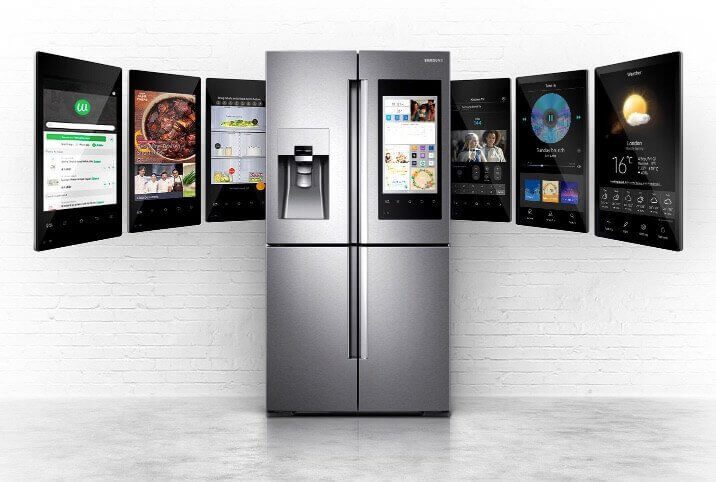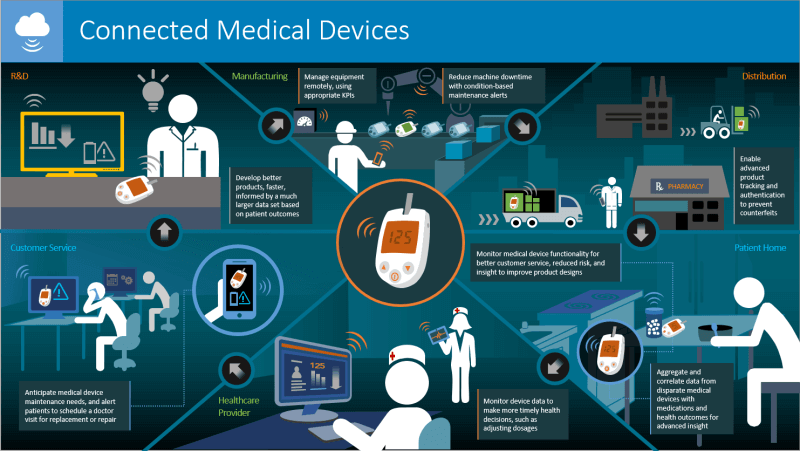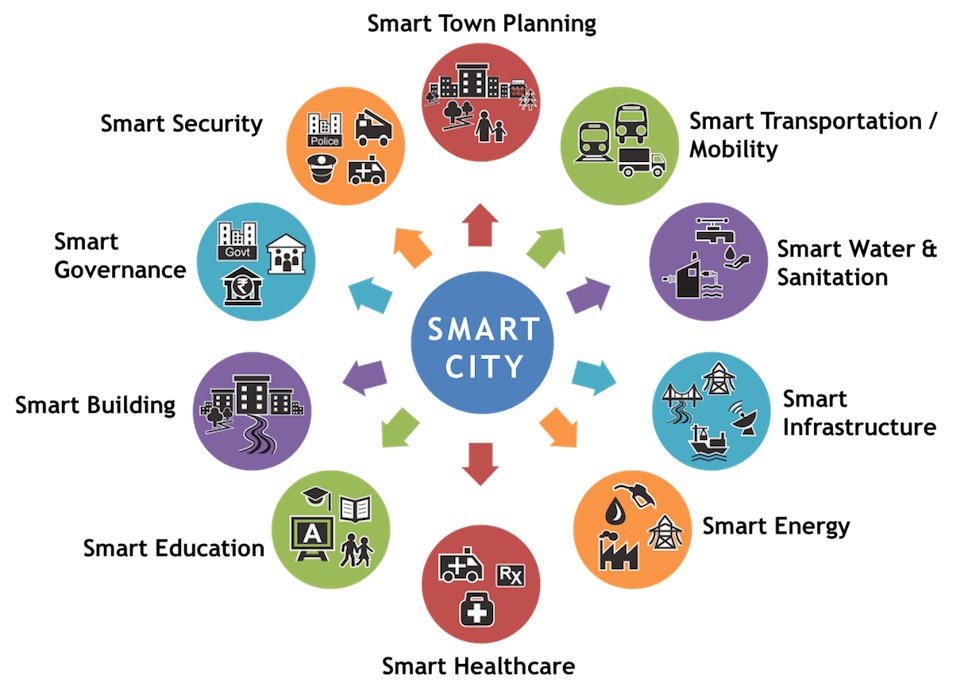The “Internet of Things” (IoT) is becoming an increasingly hot topic in today’s world. Over the past decade and a half, the IoT has rapidly grown and evolved. Today, it is changing the world as we know it and offering new opportunities for growth.
If this is the first time you are hearing of the IoT, or if you simply don’t quite understand what the IoT is, you are not alone. For those who are unfamiliar with the term, here is simple explanation:
Basic Explanation of the IoT
In the simplest sense, the IoT is a concept of connectivity. It is the idea of connecting any device with an on/off switch to the internet, and multiple of these devices to one another.
The devices associated with the IoT are pretty extensive. For example, cell phones, watches, lamps, coffeemakers, refrigerators, thermostats and cars are just a few devices that have been created IoT capabilities. Basically, the IoT is a large network of these connected “things” and the intelligent use of data collected and stored by through their relationship with the internet.
One example of current IoT technology is the Nest Smart Thermostat. The Nest Smart Thermostat is a thermostat that’s connected to the internet. With smart technology, it collects data and learns your family’s routines, adjusting the temperature accordingly. Based on whether the inhabitants of a house are away or home, awake or asleep, the Nest Smart Thermostat adjusts the temperature up or down. In addition, the thermostat can be managed via smart phone, and it has the ability to alert users when problems arise with their heating and/or cooling systems.
You can take this concept and apply it to other devices. Almost anything with an on/off switch and internet capabilities can utilize the IoT. By not relying on human interaction, the IoT can promote increased efficiency and save energy. On a large scale, this could have dramatic implications for things like healthcare and transportation networks.
History of the IoT
The vision of intelligent, communicating devices was around even before the launch of the internet. Some of the major milestones of development are simply the growth of the internet and the way it has evolved over the past several decades.
A list of these milestones can be found here, but an overly basic summary follows the evolution of the internet. First, the internet connected people to content. Then, it connected people to services. Later on, it connected people to people. Now, it is connecting things to things (IoT).
The term IoT was thought to be coined in 1999, by Kevin Ashton, during a presentation for Procter & Gamble. Ashton, the executive Director of Auto-ID Labs at MIT, spoke about the idea of computers capturing and sharing data without any help from humans. He explained how direct communication between devices would allow for increased efficiency and get rid of human limitation.
Machine to Machine solutions (M2M) is a subset of the IoT. It is basically a broad label used to describe technology that allows networked devices to communicate and perform actions without manual assistance from humans. Machines talking to machines (things talking to things) is essentially the foundation of the IoT.
Impacts on Businesses, Consumers and Society
According to a Business Insider Intelligence Report, 24 billion IoT devices are expected to be installed by 2020. Furthermore, total investments over the next five years are estimated to be around $13 trillion. It is estimated that the IoT will pay back investors $13 trillion as soon as 2025. Businesses, consumers and the government are all using IoT devices. Almost every person will experience one or more benefits from this technology.
Businesses
For business enterprises, the IoT offers solutions, increased efficiency and improved decision-making. Manufacturing, consulting, business services and distribution & logistics are the top four industries leading IoT adoption.
In 2015, Business Insider reported that 35 percent of manufacturers were using smart sensors, and more than 10 percent were planning to implement them in the coming years. In the same report, it was estimated that by 2020, 75 million IoT devices would be shipped for agricultural purposes. In the agricultural industry, IoT devices are used to track things like soil temperature and acidity, helping farmers increase crop yields and improve efficiency of farming.
Banks, retail, hospitality, food services, utilities, transportation, energy and healthcare industries are also using IoT technology. By 2020, 5.4 million IoT devices are expected to be used on oil extraction sites. The majority of IoT devices in this sector will be things like internet connected sensors, which can provide feedback on environmental metrics, improve extraction and increase safety.
Consumers
As a consumer, you may already have personal IoT devices. New cars come preloaded with IoT applications, and fitness trackers use the IoT to tell your friends how much you’ve been exercising.
If you are less familiar with IoT devices or simply wish to imagine a world where all of your devices are connected and communicating, take this for an example:
It’s Monday morning. A calendar on your phone prompts a bedside alarm to go off at a certain hour. This alarm is familiar with how much time it takes you to get ready for work, and by knowing your routine, it chooses an hour that will allow you adequate time to prepare.
As your alarm goes off, the coffee maker in your kitchen goes on. You get out of bed, get dressed, and you eat breakfast. When you step outside the door, freshly brewed coffee in hand, your car is already warm and started. Upon entering the car, you are given a traffic report and told the fastest route to work. This is an example of IoT technology working to promote ease of life on a personal level.
Society
On a larger scale, the opportunities of IoT technology are virtually endless. The IoT can be applied to things like transportation networks, defense systems, infrastructure, smart buildings and eventually smart cities.
In healthcare, the IoT has the ability to keep patients safer and healthier while improving care delivery. One example of IoT in healthcare is the development of a continuous glucose monitoring system for people with diabetes. This device uses a sensor that communicates with a smart transmitter and sends blood glucose levels to a mobile app on a patient’s phone. IoT technology like this is expected to dramatically change the healthcare field.
The IoT could also dramatically improve energy efficiency, productivity and other aspects of daily life. Increased connectivity between people, processes and things opens the door for educational and economic growth. Safer and more efficient transportation, waste reduction, social and environmental benefits are just the beginning.
Challenges With the IoT
Security is perhaps the biggest issue when it comes to the IoT. A world where cars, city infrastructure, healthcare, companies and homes are all connected creates a perfect storm for cyber vulnerability. As billions of devices become connected, the devastation hackers and cyber-attacks can create increases.
In the home, Americans are worried about the possibility of someone stealing their personal information. Researchers have been able to hack IoT devices, which means hackers can likely do the same. Security within large companies and city infrastructure creates an even bigger platform for concern, especially since it will be difficult to be aware of all of the necessary safeguards during early adoption.
Another issue is that of privacy and data sharing. The IoT has the potential to create a staggering amount of data, but what the world will do with this data is a whole other issue. Vast amounts of data introduce more entry points for hackers, and it needs to be sorted, stored and analyzed.
Maintaining privacy with this data is a main concern and likely will become increasingly important as more IoT technology is adopted. Companies with protection plans offered by HelpCloud Tech Support can minimize a hacker’s chances at accessing your personal information. In the future, companies will become increasingly involved in offering personal protection while they answer consumers’ security questions and privacy concerns.
Future of the IoT
As the world becomes increasingly connected, it is hard to predict all that the IoT might encompass. Some expect the IoT to become “ the backbone of future customer value,” as it already has and will continue to play a major role in the global market. If interested in learning more, consider checking out The Internet of Things 2017 Report by Business Insider Intelligence.
Conclusion
With the IoT, endless opportunities await. Obviously, many of the benefits are yet to be realized, and so are many of the challenges. As the world heads towards increased connectivity with IoT technology, there will be a lot of learning, changing and growing. In the end, hopefully the benefits outweigh the challenges and it leads to a safer, happier, healthier and more productive world.



